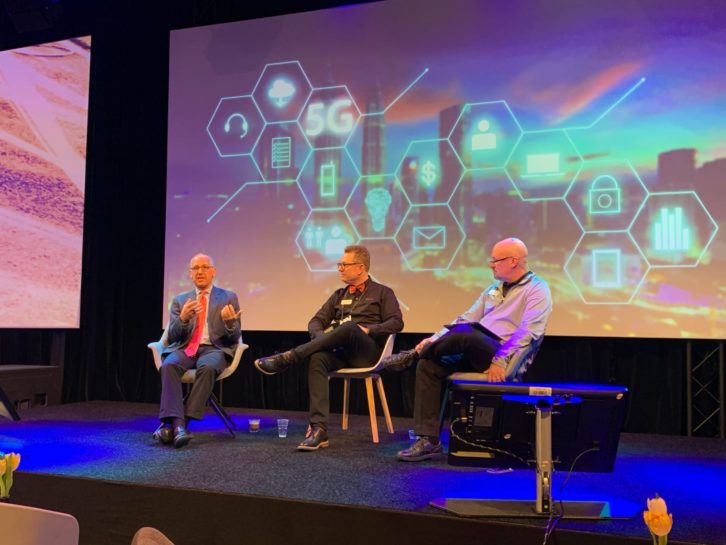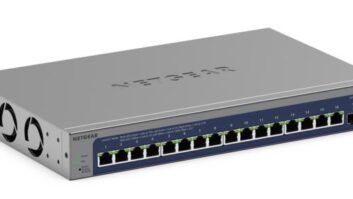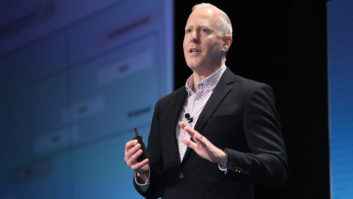
John Penney wants to do a little mythbusting regarding 5G.
“I’m sure you all heard that 5G is very low-latency, which means there’s a very low connection time on the network,” he says. “I attended one Mobile World Congress in which they used this illustration regarding that low latency: You could have a surgeon in one room, and a patient 1000 miles away in another room, and the doctor could perform robotic surgery using 5G.
“Do you REALLY want that surgery to take place over the open internet?”
Penney — in a podcast taped before a live audience on the Mainstage at ISE 2020 — says that the notion is a fun thought experiment, but it’s a fantasy. “You could pull it off if you had some truly hardened, robust systems and hardware between the two to handle it, but the backhaul (all the intermediate links between the core of a network and the edge of the network) would have to be perfect.”
A Health Scare?
Penney, who gave the opening keynote address at CEDIA Expo 2018 (and who’s since become a valued CEDIA content contributor and volunteer) knows of what he speaks. His list of accomplishments is long: He’s been handling the marriage of strategic partnerships, content, and gear for decades for media and media technology-related companies, including Twentieth Century Fox, Starz, HBO, Viacom, and Scient.
Penney has heard that there’s been some health concerns regarding 5G, too. In fact, the government of Switzerland halted the adoption of 5G in that country even as they’re building infrastructure for the fifth generation of cellular technology — there are concerns about radiation exposure to the general population.
Penney is less alarmist. “The truth is that much of 5G will run on high frequency, but at very low power,” he explains. “If I told you your Wi-Fi router in your home was running at 5 GHz, you’d wouldn’t say, ‘Uh-oh, I’m running this frequency all over my home’ — it’s at a power that’s low enough not to cause you any harm. I’m sure that there are certain situations with the right frequencies and the right antennas on the right device that, close to your body and with constant exposure, could cause danger.
“Admittedly, we need more information about this, but I think there’s a low probability that it’s going to have any health impact.”
Related: Experts Discuss the Impact of 5G
What 5G Really Can Do
Penney sees the immediate application of 5G in a major way in B2B environments. “There will be billions of items on the network. What are some of those items going to be? Sensors.
“Now let’s say you’re a car manufacturer. As you’re making the car, your factory is controlled by 5G robotic systems, your car then has 5G sensors that are used for the manufacturing process — for quality control and the movement of the car through the system.
“But then when your car leaves the factory, it goes from the 5G in the factory to the 5G wide area network. Then it can be seen as inventory on the dealer’s lot. The dealer can remotely tally how many miles it’s been driven before you buy it.”
And at that moment of purchase, the technology shifts to include the consumer. Penney continues: “And now you have the car, and that 5G sensor network is alerting you regarding predictive maintenance. If you’re making that purchase five years from now and it’s an autonomous vehicle, it’s communicating with other cars on the network to keep you safe.
“Now apply those concepts to every device you have in your home, and the possibilities are really incredible.”
Want to hear the whole episode? It’s “The CEDIA Podcast 2009: 5G Update”







